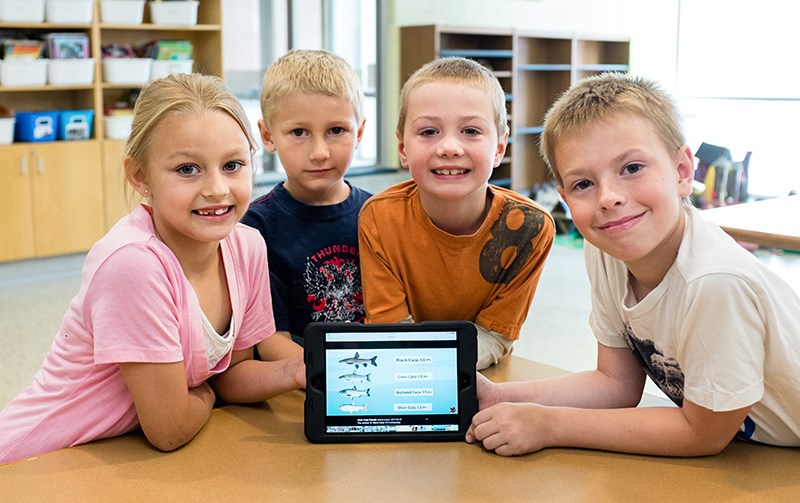Troy Shantz
A group of Grade 1-2 students has turned to filmmaking to draw attention to invasive Asian carp.
Under the direction of teachers Chantima Oliveira and Greg Van Bunderen, the 45 kids at P. E. McGibbon School researched, wrote and directed a two-minute video about the fish and how they threaten the Great Lakes.
“We really wanted to talk about problems in our community. Then we started reading about Asian carp and everyone was just so interested, and we kind of ran with that,” Oliveira said.
Asian carp is a collective word for four species that includes silver carp, bighead carp, grass carp, and black carp.
Native to lakes and rivers in China and Russia, they were introduced as a novelty to backyard ponds in the ‘70s. The fish have spread northward through the Mississippi river system, where they crowd out native fish species.
Individual Asian carp have reached the Great Lakes, and if reproducing populations become established they could do serious ecological, recreational and economic damage, experts say.
Are the carp here already?
“No, but they’re coming,” said eight-year-old Jaxon Hillman, one of the students behind the video.
“They’re on their way,” added classmate Kloe Ennett.
Oliveira and Van Bunderen guided the students by encouraging them to come up with their own questions.
“They really planned out the whole script through ... without even knowing,” Oliveira said.
The students also had the opportunity to interact with a Sault St. Marie-based environmental group via Twitter.
“Silver carp jump from the boat motors,” said classmate Kane Purnell, alluding to YouTube scenes of fish leaping from the water in response to boat motor sounds.
“They can grow up to the size of a Grade 8 (student),” added Hillman.
“Grass carp got past the electric fence,” said first-grader Atley Richardson, referencing attempts by U.S. conservation officials to check their advance by placing electric fences in tributary rivers.
The students used class iPads to comb the Internet for facts. As they discussed how they might share their information with the wider community the project morphed into a video, said Van Bunderen.
“There were a few of them that said, ‘Why don’t we call everybody?’” he recalled with a laugh.
There are also plans to place QR codes around town, allowing passersby to take a photo with a smartphone and launch the student video.
“People are actually learning from our seven and eight-year-olds. That’s the coolest thing for me,” he said.
The students spent a great deal of time using multiple iPad apps simultaneously, through research and video recording.
Oliveira said it gave them the chance to explore something beyond their own block.
“A lot of our kids haven’t been outside of this neighbourhood at all,” she said.
“I think with what’s available to them it makes an impact on their understanding,”
The video the students produced can be viewed by clicking this link
